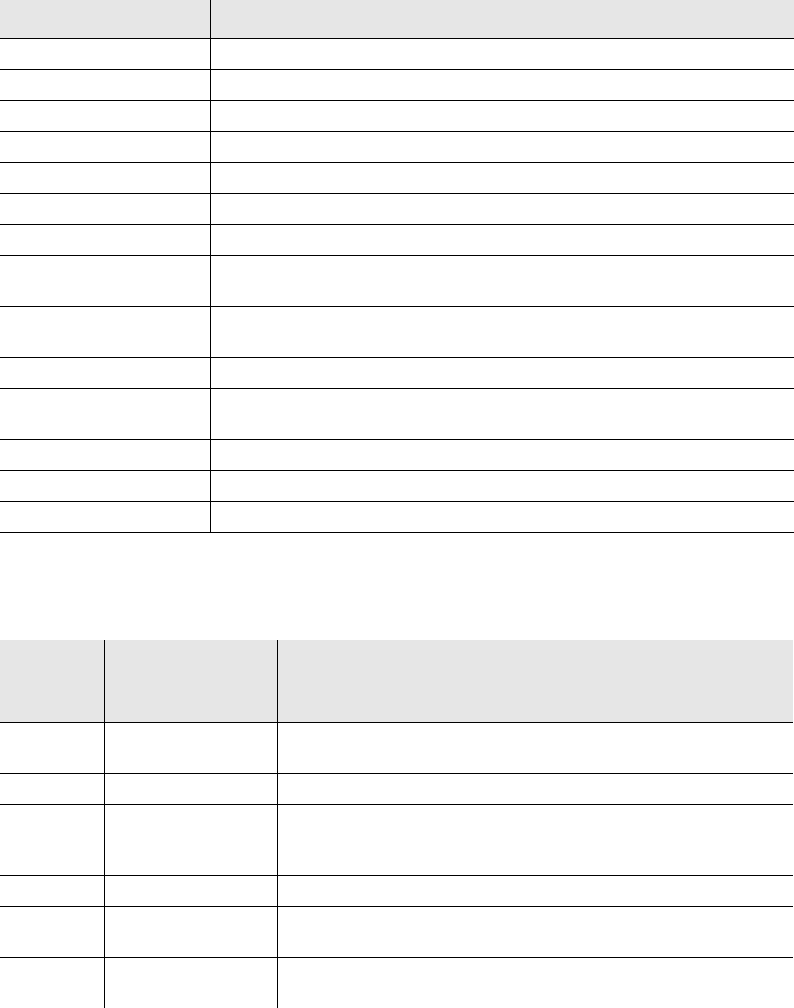User's Manual
Table Of Contents
- 0020600045_Viking VP600 Portable Radio Operating Manual
- Features
- Controls and Display
- General Operation
- Radio-wide Features
- 4.1 Viewing Radio Information
- 4.2 Option Keys / Buttons
- 4.3 Feature Enable / Disable
- 4.4 Menu Mode
- 4.5 Function Recall
- 4.6 Time-Out Timer
- 4.7 Home Channel Select
- 4.8 Power Output Select
- 4.9 Alert Tone Select
- 4.10 Surveillance Mode
- 4.11 Scanning
- 4.12 Global Positioning System (GPS)
- 4.13 Radio Service
- 4.14 RSSI
- 4.15 Fire Ground Mode
- Conventional Mode Features
- 5.1 Monitoring Before Transmitting
- 5.2 Monitor Mode
- 5.3 Busy Channel Lockout
- 5.4 Call Guard Squelch
- 5.5 Penalty Timer
- 5.6 Conversation Timer
- 5.7 Repeater Talkaround
- 5.8 Displaying Transmit / Receive Frequency
- 5.9 Emergency Alarm and Call
- 5.10 Conventional Mode Scanning
- 5.11 Standard Conventional Calls
- 5.12 ANI Signaling Options
- 5.13 Project 25 Mode Features
- 5.13.1 Digital Unit ID
- 5.13.2 Talkgroup ID
- 5.13.3 Network Access Code
- 5.13.4 Out of Range (EFJohnson Conventional) Indication
- 5.13.5 Automatic (EFJohnson Conventional) Registration
- 5.13.6 P25 Group Calls
- 5.13.7 Talkgroup Scan
- 5.13.8 P25 Unit Calls
- 5.13.9 P25 Conventional Telephone Calls
- 5.13.10 Call Alert
- 5.13.11 Call History
- 5.13.12 Messaging
- 5.13.13 Status Messaging
- 5.13.14 P25 Packet Data
- 5.14 Keypad Programming
- 5.15 Text Messaging
- 5.16 Fire Ground Mode
- SmartNet / SmartZone / P25 Trunked Features
- 6.1 Analog and Digital Operation
- 6.2 Standard Group Calls
- 6.3 Unit Calls
- 6.4 Telephone Calls
- 6.5 Call Alert
- 6.6 Messaging
- 6.7 Sending Status Conditions
- 6.8 Emergency Alarm and Call
- 6.9 Failsoft Operation
- 6.10 SmartNet / SmartZone / P25 Trunked Scanning Features
- 6.11 Dynamic Regrouping
- 6.12 SmartZone and P25 Trunking Unique Features
- 6.13 Zone Password
- Messages
- Secure Communication (Encryption)
- Data Features
- Service Information
- 00FCC Safety Requirements

Viking™ VP600 Portable Radio Operating Manual 7-5
Messages
Zone Fail - If Site Trunking and Display Site Trunking are enabled, this will be
displayed if the zone controller goes down.
The following messages are defined in the radio. Other messages are displayed as a
number (Table 7.2). Contact EFJ Customer Service for more information about a
numbered reject message.
Table 7.1 SZ System Reject Messages
Message Description
ID Invalid The ID of the subscriber is invalid.
Target Invalid The ID of the target is invalid.
ID Disabled The ID of the subscriber is disabled or not allowed to access the system.
Target Disabled The target ID is disabled or not allowed to access the system.
Invalid Group The takgroup is not valid.
Disabled Group The talkgroup is disabled or not allowed on the system.
Feature Disabled The attempted feature is not allowed on the system.
Clear Only Secure calls are not allowed for the target ID or are not allowed for the current
group.
Secure Only Clear calls are not allowed for the target ID or are not allowed for the current
group.
Over Budget Interconnect dollar limit exceeded by user.
Not Allowed Site The subscriber’s ID is not allowed or the current talkgroup is not allowed on
the site.
Override Invalid There is not call busy override.
Analog ID The user tried to use a radio with an analog ID on a digital talkgroup.
Trespass Denied A site has rejected the subscribers request to trespass.
Table 7.2 Viking LED Failure Codes
Orange
LED
Blinks
Startup Failure Description
2 Bad File Format The parameter file has a newer file format version than what
matches the software in the radio.
3 Parms Fail There is no parameter file in the radio.
4 Bad Band The radio band in the parameter file does not match the radio band in
the tuning parameters. You will see this message if a parameter file
for the wrong band is downloaded to the radio.
5 Corrupt Parms The parameters checksum or other data is corrupted.
6 EEPROM Fail The self test timed out and the parameter file has not yet been read
and verified.
7 DSP Fail This error indicates that the DSP failed to complete its startup
procedure at power up.










